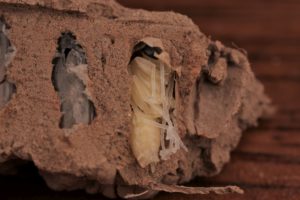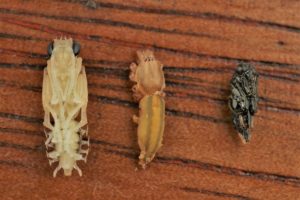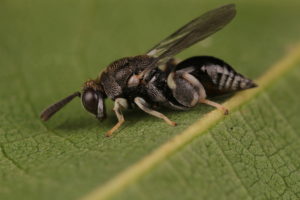Legless spiders



In Peru I dangled a UV light from an old bit of plank to attract nocturnal insects. On the crumbling plank was a mud nest made by a solitary hunting wasp. Needless to say, I carefully removed the nest from the plank to have a better look at in the lab.
The nest consisted of several chambers, in which the offspring of the wasp were at varying stages of development. Some of the wasp larvae had already pupated, while other chambers were stuffed with provisions for the wasp’s offspring – in this case, Clubionidae spiders. The female wasp who had built this nest had gone to great lengths to find her quarry, tackle it and bring it back to the nest. This has to be repeated several times for every brood chamber she makes and there were several brood chambers in this nest.
The female wasps stings her victim to paralyse it and because the spiders legs are spindly and do not contain much nourishment she lops them off, which also lessens the load to be flown back to the nest. Legless, but still alive, the paralysed spiders are walled into a brood chamber to await the hatching of the wasp larva and a gruesome end.
As is always the way in the nature though there are many layers of complexity. The wasp’s larva are quarry themselves for a whole raft of beasts. In this case, many of the nest maker’s larvae were consumed by chalcid parasitoid wasp, the pupa of which can be seen in the photo. Even the parasitoids have their own parasitoids.
Leave a Reply